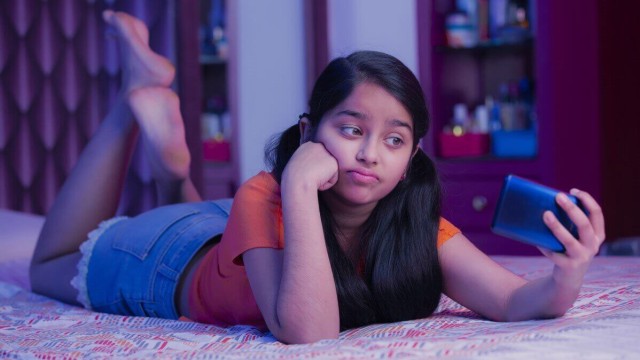
5 Ways Social Media Can Influence Body Esteem in Female Adolescents
In a study on body esteem, Associate Professor Hwajin Yang, Jiaqi Joy Wang, Yue Qi Germaine Tng from the SMU School of Social Sciences, and Sujin Yang examined the impact of social media on the way adolescent girls view and value their bodies. Among the findings was that excessive social media use has a negative impact on body esteem.
With Internet connectivity being both widespread and high-speed in Singapore, residents in this city-state is one of the world’s most active users of social media, with 79 per cent of the population engaging with these online platforms.
What impact does social media have on the way adolescent girls view and value their bodies? That’s the subject of Effects of Social Media and Smartphone Use on Body Esteem in Female Adolescents: Testing a Cognitive and Affective Model, a research article authored by Associate Professor Hwajin Yang, Jiaqi Joy Wang, Yue Qi Germaine Tng from the SMU School of Social Sciences and Sujin Yang.

The authors examine body esteem—a person’s overall appraisal or perception of their body or appearance. In their study, they chose to focus on female adolescents, because this is a demographic uniquely vulnerable to poor body esteem. That’s due to a combination of biopsychosocial factors, including changing physicalities during adolescence, and the way physical appearance influences self-worth and peer acceptance for female adolescents.
These are some of their findings.
1. Too much social media negatively impacts body esteem
The authors define excessive social media use as more than three hours daily, and in a study of 100 female adolescents aged 13 to 18 found that this negatively impacts body esteem in female adolescents.
Why? Highly visual platforms such as Instagram tend to reinforce the thin ideal, and frequent usage incites users to compare themselves against these standards and feel dissatisfaction with their own bodies. Exposure to such visual content also leads to social appearance anxiety, which is the fear of negative body-related evaluation by others.
2. Not all smartphone activities are bad when it comes to body esteem
Certain smartphone activities—such as browsing websites and videos that feature people who embody the thin ideal—reinforce the same messages as visually-driven social media platforms. Such activities thus negatively impact body esteem in the same way as social media platforms.
However, the authors’ findings suggest that smartphone activities that do not involve appearance-related content do not affect body esteem. In fact, they found that general smartphone screen time without social media usage does not necessarily fortify cognitive internalisation of thin ideals, and that only excessive levels of smartphone consumption (above four hours daily) engender poorer body esteem in female adolescents.
3. Online behaviour affects offline behaviour
Social media platforms can encourage online interaction, and comparison with, one’s real-world social network. The authors found that such real-life comparisons (for instance, viewing one’s peers as desirable targets for upward comparison) through excessive social media use have an impact on body esteem.
“This suggests that female adolescents’ internalisation of ideal thinness enforced by social media escalates unhealthy comparison patterns, even outside of screen time, thus harming their body esteem,” they write.
4. Other facets to investigate
“Our study is not without limitations,” the authors acknowledge. For instance, reverse causation is a possibility—that is, it is possible that individuals who already suffer from lower body esteem may use social media and smartphones excessively to seek external validation and assurance.
Another interesting direction future studies may wish to examine concerns the increasing prevalence of body positivity content that embraces diverse body types rather than solely champion the thin ideal. Such trends may change prevailing norms of beauty over time, and thus alter the impact of appearance-focused content on young women’s body esteem.
5. Shaping social policy and community interventions
Female adolescents’ problematic social media and smartphone use, particularly in relation to appearance-focused content, can lead to serious risks. For instance, recent findings suggest that adolescent girls’ negative body image predicts a greater risk of online sexual victimisation, and poor body esteem has been linked to eating disorders.
As such, the authors suggest that future researchers examine the “efficacy of school or community-based interventions imparting mindful social media practices to protect adolescent girls online” and that further research is warranted to “elucidate protective factors that mitigate the links between social media use, smartphone activities, and body esteem in female adolescents”.
Looking to acquire a broad repertoire of skills and critical understanding of social issues? Learn more about our Bachelor of Social Science programme today!




